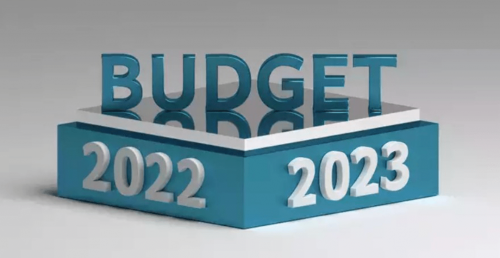Our Take on the Budget 2022-23
February 02, 2022 | Industry Insights

Builds on the growth momentum through a Higher Multiplier Effect (Manufacturing, Digitization and Sustainability)
- CAPEX to continue to drive growth
The Indian economy is expected to grow at 9.2 per cent in FY22. The priority in the budget was to sustain the high growth. The major thrust was on reviving the capital expenditure cycle in the country. The rise in capital expenditure helps to crowd in private investment. The virtuous cycle of investments begins in the economy. Capex has a higher multiplier effect on economic output over revenue spending. The capital spending push will also induce demand for services and manufactured inputs from large industries and micro, small and medium enterprises (MSMEs), while helping farmers through better infrastructure. The focus is on building infrastructure, housing and promoting digital economy.

- 15% lower tax rate for new manufacturing units got extended for one more year till March 2024.
- Low Income Housing: Allotted Rs 48,000 crores for FY23 under PM Housing scheme.
- Tap Water in Homes: Allocation of Rs 60,000 Cr. has been made to this scheme in 2022-23 to cover 38 million homes.
- 68% of defense procurement budget kept for domestic private industry.
- The launch of 5G auctions in 2022 will help boost telco sector and the classification of data storage as infrastructure spending is expected to benefit telecom companies
Our View
- Import Substitution: The focus is to boost domestic manufacturing. Here, the government increases custom duty in certain products, includes some sector in the PLI Scheme like Renewables, Defence, Textiles and Electronics to name a few.
- Push on building infrastructure: Increase in demand for capital goods, building materials, cement etc.
- Higher capital expenditure would mean higher capacity utilization of steel and other metals.
- Focus on Exports: The pandemic has certainly built a framework for India to find a pivotal place in the global value chain in some sectors like Chemicals and Textiles.
Staying true to our investment style, we’ll focus on companies where competition is limited, plays a pivotal role in the manufacturing process and an indirect play on the expected high growth in a broad sector.
2. Transportation and Logistics: link to growth of trade and economic activities
- Focus on building roads, building railway network for swifter movement of goods and services
- The expansion of the national highways network by 25,000 kms
- Railways will offer new products for small farmers and MSMEs, integrate coastal and railway network.
- 400 new “Vande Bharat” trains in three years
- 100 PM Gati Shakti cargo terminals will be developed in the next three years.
- The budget aims to spend Rs. 20,000 crores under PM GatiShakti Master Plan.
This is expected to benefit key infrastructure and logistics players.
3. A GREEN BUDGET for the greener future
Energy transition, energy efficiency, electric mobility, and supporting renewable energy infrastructure was the key theme of the budget 2022-23. Promoting energy transition and climate action was one of the key focus areas.
- 280 GW solar capacity target by 2030 - Under PLI Scheme, the government approved the proposal of an additional allocation of Rs. 19,500 crores. Earlier allocation was Rs 4,500 cr. The government will give priority to fully integrated manufacturing units from polysilicon to solar PV modules.
- 25% and 40% BCD on Solar cells and Solar Modules to promote domestic manufacturing of solar modules. This is a big step. And, we believe it will help India to become a leading player in the solar equipment manufacturing industry.
- Focus on ESG Investing - Sovereign Green Bonds will be issued for mobilizing resources for green infrastructure. The proceeds will be deployed in public sector projects which help in reducing the carbon intensity of the economy.
- Blending of fuel is a priority of this Government. An additional Basic Excise Duty of Rs. 2 per litre on unblended Petrol and Diesel, would be levied.
- The government will promote a shift to the use of public transport in urban areas. This will be complemented by clean tech and governance solutions, special mobility zones with zero fossil-fuel policy, and EV vehicles.
- Battery swapping policy for EV promotion also announced.
CONCLUSION
Overall, the budget can be described as a pro-growth budget with a more stable tax regime. As an equity investor, we will find our pockets of growth from the budget. It aimed to reduce duty on imports on certain raw materials to ease on the higher prices like chemicals, stainless steel etc. It is always said that any individual should focus on their strengths. The key idea of the budget was to focus on India’s strengths from both domestic and export perspective and be Gung Ho towards growth.


 Follow
Follow